Japanese pottery has a long and rich history that is still being explored today.
There are almost as many types of pottery as there are prefectures in Japan.
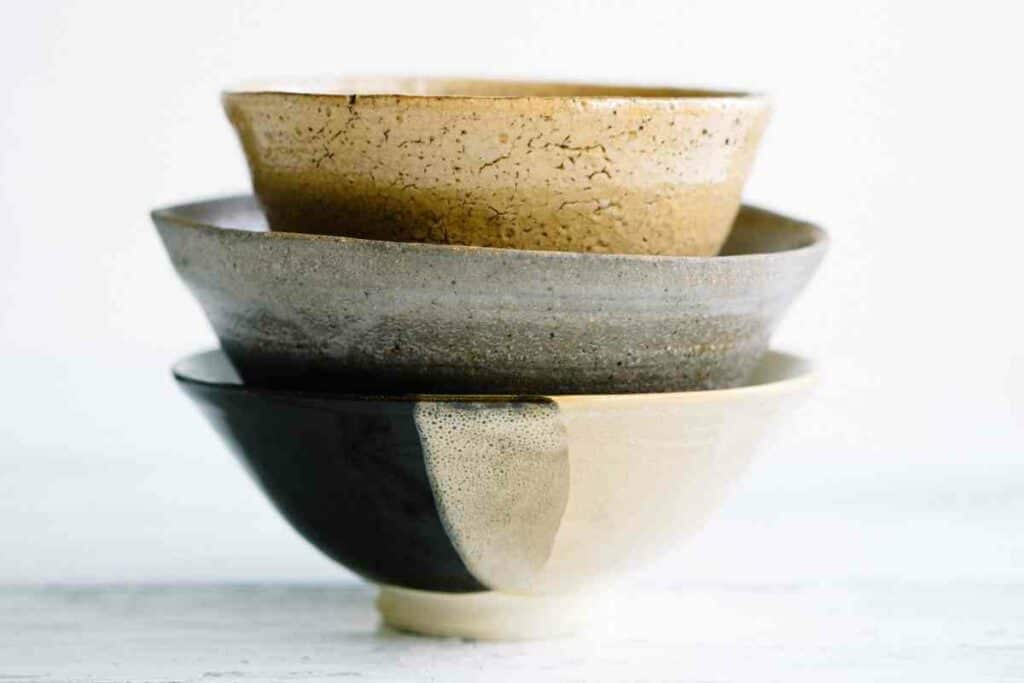
Each style of pottery is named after the town it originated in, and has unique properties and purposes.
In This Article – We will explore some of the most common Japanese pottery types and their histories.
Table of Contents
9 Most Significant Japanese Pottery Styles
There are plenty of known pottery styles, but of those, there are 9 that have cultural and historical significance.
These are the 9 pottery styles that are most significant in Japanese culture.
1. Imari-Arita Ware
Imari-Arita ware originated in the Saga prefecture, in and around the town of Arita.
In 1616 a local potter discovered a kaolin deposit in Izumi mountain. This type of clay has a naturally white, or close to white color.
The clay from the kaolin deposit made the first white porcelain in the area.
Imari-Arita ware can be characterized by delicate and lightweight porcelain pieces decorated with indigo, red, and gold colors.
2. Seto Ware
From the Aichi prefecture, this is one of the oldest pottery styles in Japan and makes up one of the six ancient kilns.
This region was the first to begin glazing the ceramics to create sturdier pieces.
The Seto ware you’ll see can be recognized by the indigo blue paintings of Aichi’s scenery on white ceramics.
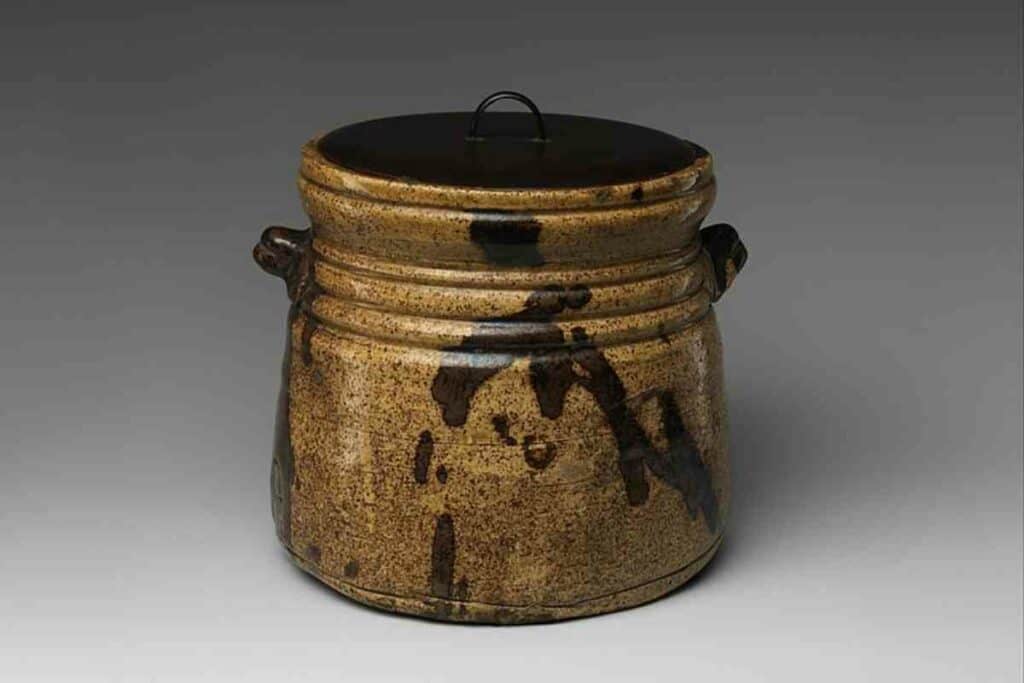
Today Seto is the largest ceramics center in Japan.
There are over 60 kilns in the town, as well as the Seto Ceramics and Glass Art Center and Seto City Art Museum where you can see recovered ceramic pieces.
There are also festivals in Seto celebrating the pottery style. You can attend the Seto Toso, the Setomono, the Maneki Neko Festivals, or the Seto Pottery Studio Fair and Market.
Also Read ?
3. Mino Ware
Mino ware is a type of Japanese pottery that originated in the Gifu Prefecture.
It is made from clay from the same area as Seto ware. There was a heavy Seto influence on Mino ware because of this, but they did manage to stand out.
The ceramics in this region were made with a thick layer of glaze, and was slowly fired and cooled.
This process created numerous tiny pinholes in the pottery. This is the biggest defining feature of the early Mino ware.
4. Tokoname Ware
Tokoname in the Aichi prefecture is another among the 6 ancient kilns.
The clay in this area contains high levels of iron, giving the ceramic pieces a red-orange color when it’s been fired to over 2000 degrees Fahrenheit.
This region created many daily items instead of items that were only to be used during tea ceremonies.
They made large bottles, small containers, pots, vases, tea utensils, plates, and bowls.
The clay in this region became heavily sought after during two periods.
The first was the Meiji period when the railroads were being built and the clay was used to make water pipes.
Then in the Taisho period, clay tiles were frequently purchased for decorative construction.
Also Read ?
5. Shigaraki Ware
Shigaraki ware is a type of ceramic that originated in the Shiga prefecture.
The name for this region comes from the fact that it is full of mountains and forests, giving it the nickname “the land of forests.”
This type of pottery gets its rustic feeling from the clay that is used to make it. This clay contains high levels of iron and is found in the Mt. Shigaraki area.
The pottery made with this clay is red or orange in color and has a heavily textured, unglazed surface.
This style started as tiles when Emperor Shomu requested special tiles for his palace, but it moved to a focus on water jugs.
Now the region makes the most tanuki statues in the world. Tanuki is a real animal that looks like a raccoon and a dog that is known to cause mischief and mayhem.
Despite their reputation, they are a symbol of good luck and fortune, and keeping a tanuki statue in your home will bring you wealth and happiness.
6. Bizen Ware
Bizen ware originated in the Okayama prefecture.
It is made with clay similar to the material used in Shigaraki ware, giving it a reddish-brown color. This clay was found in the Bizen and Imbe rivers.
Bizen ware is characterized by its simple and rustic look. It’s unglazed because the texture of the clay made it difficult to spread, so the pieces were left natural.
The pieces were then fired for a long time and at high temperatures to make them more durable.
As another of the six ancient kilns, you can still see parts of large and small kilns throughout the streets of Bizen.
7. Karatsu Ware
Karatsu ware is another pottery style that came from the Sage prefecture but is wildly different from Imari-Arita ware.
Surprisingly – Karatsu ware almost vanished because kilns were demolished to focus on Imari-Arita ware instead.
A tell-tale sign you’re looking at Karatsu ware is a piece that starts with a white or a light color on top and transitions to a darker color towards the bottom.
This could be a smooth ombre effect or a harsh line across the middle where the colors change.
This style of pottery favored pieces for tea ceremonies. Teapots, tea cups, and tea bowls were commonly made and are still being made today.
8. Kutani Ware
This style of pottery is again similar to the Imari-Arita ware, but only because the domain lord in the Ishikawa prefecture sent a potter to Arita to learn the techniques.
The potter brought home the knowledge he needed to make ceramics for the lord for over 50 years and taught other potters in the area to do the same.
The Kutani ware pieces have a blue undertone on the pieces compared to Imari-Arita pieces. This is because a different clay is used.
The undertone isn’t all that noticeable because images and patterns are pained on the ceramics with red, yellow, blue, green, and purple glazes.
9. Onta Ware
This pottery style from the Ōita prefecture isn’t known for the end product, but for how the clay is processed.
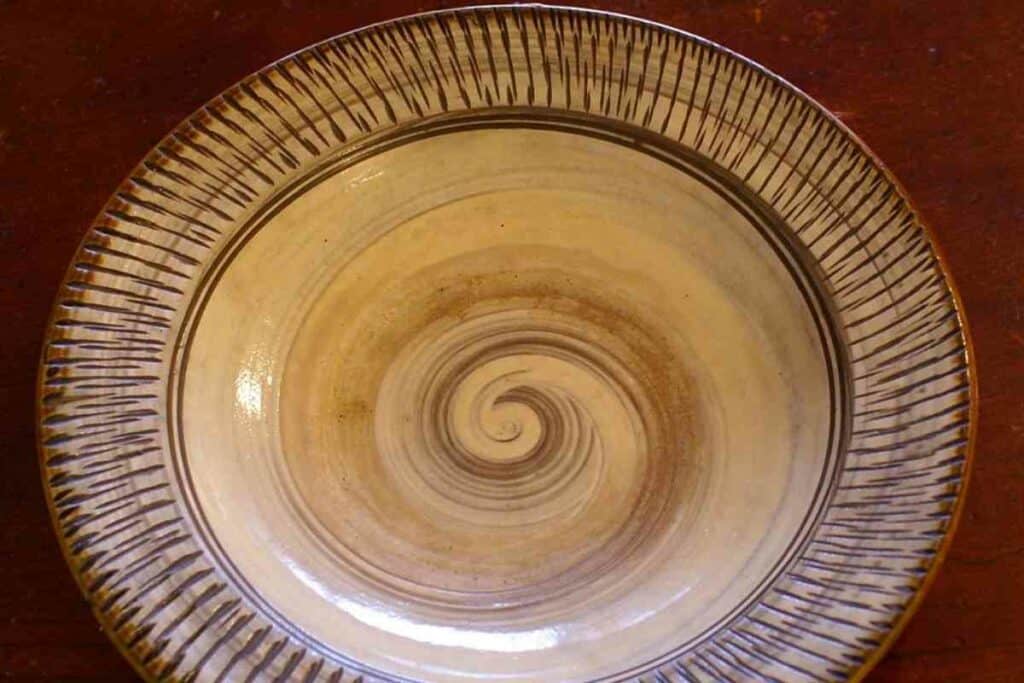
They used river water to power a mill that was used for grinding the clay so it was fine and perfect for use in pottery.
They developed this technique about 300 years ago and the same process is still used to grind claystone.
The Remaining Six Ancient Kilns
We’ve already seen Seto, Tokoname, Shigaraki, and Bizen, but how are the other ancient kilns significant to Japanese pottery?
10. Echizen Ware
Echizen from the Fukui prefecture is known for its lack of decoration or enamel.
It does have a natural glaze, however, from the ash in the firewood melting onto the ceramics as they baked in the kiln.
11. Tamba-Tachikui Ware
This pottery type appeared towards the end of the Heian period (794-1185).
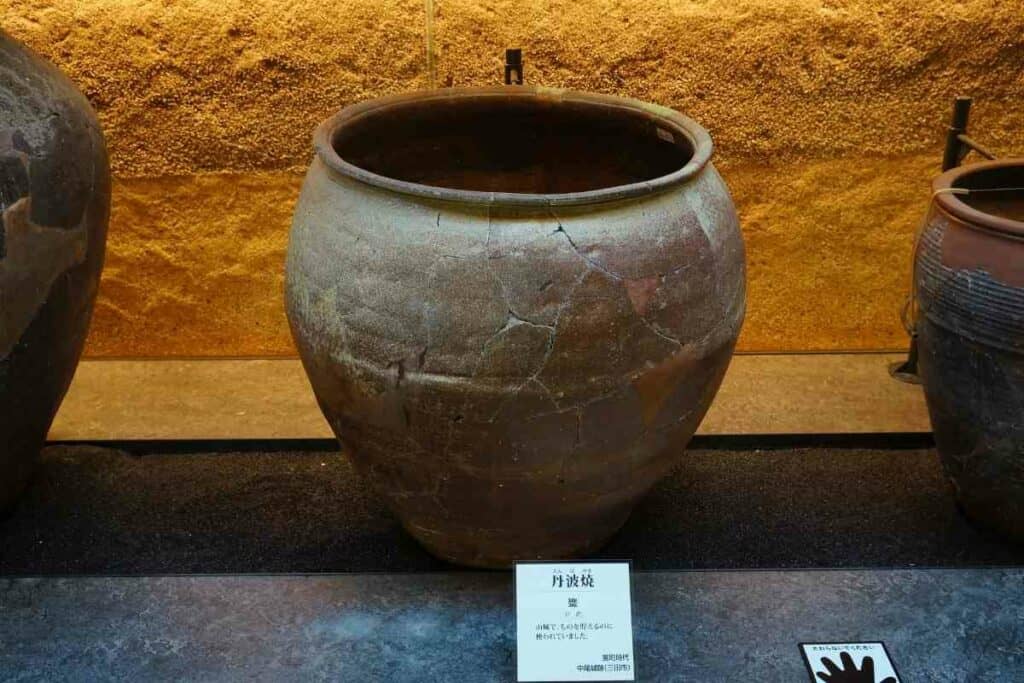
They produced useful items like bowls, large pots, sake bottles, buckets, jugs, and mortars.
Tamba-Tachikui ware has a unique look. Ash is sprinkled strategically onto the pieces to create colored patterns.
It can’t always be controlled because the flames can’t be controlled, but each piece ends up unique.
The Other Pottery Styles
Even though they didn’t make the list of the most significant pottery styles, and they aren’t part of the six ancient kilns, these other pottery styles are still unique and worth mentioning.
12. Agano Ware
Agano ware originates from the town of Fukuchi in the Fukuoka prefecture.
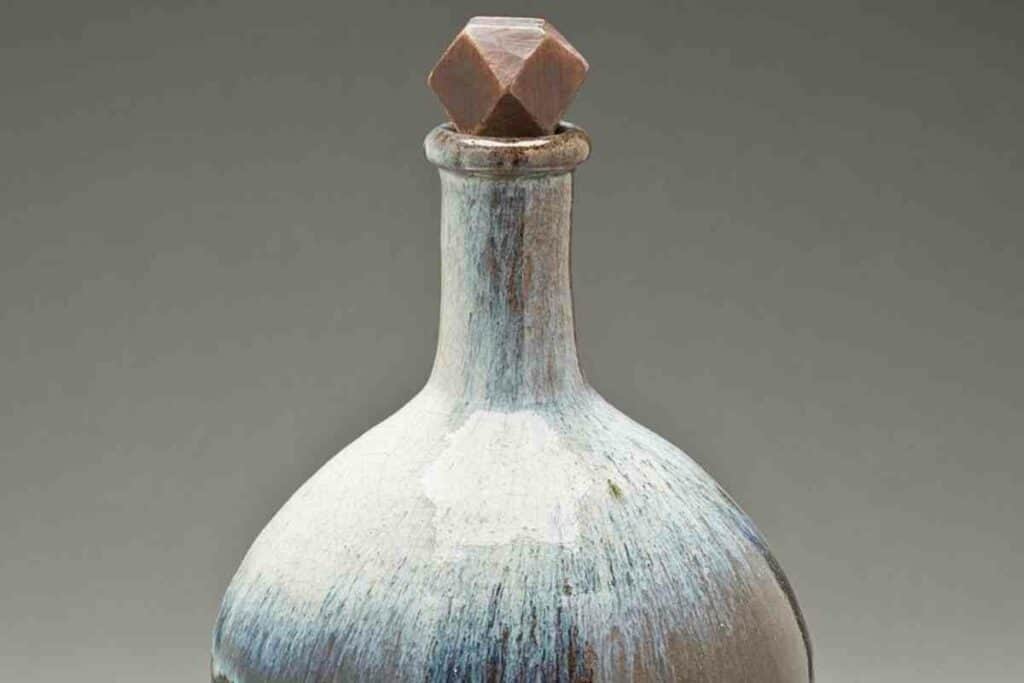
The lord of the area brought in a potter from Korea to make a special tea bowl for him.
This style uses oxidized copper to create a finished blue-green colored piece.
13. Aizu-Hongo Ware
Aizu-Hongo ware is unique in the way that it’s created.
There are three types of clay used:
- hard clay for the base
- sticky clay for the middle
- fine powdery clay for the surface
The pots are thrown on a wheel like other Japanese pottery styles, but then they’re carved with images and designs.
Once Carved – The pot is covered in a white slip (clay mixed with water) and left to dry. Once dry, it’s fired and then glazed.
14. Amakusa Ware
Amakusa ware is made on the Amakusa Islands which are located in southwest Kyushu.
The area used to be known for its porcelain, but that changed when Christian missionaries were banned and kilns were destroyed.
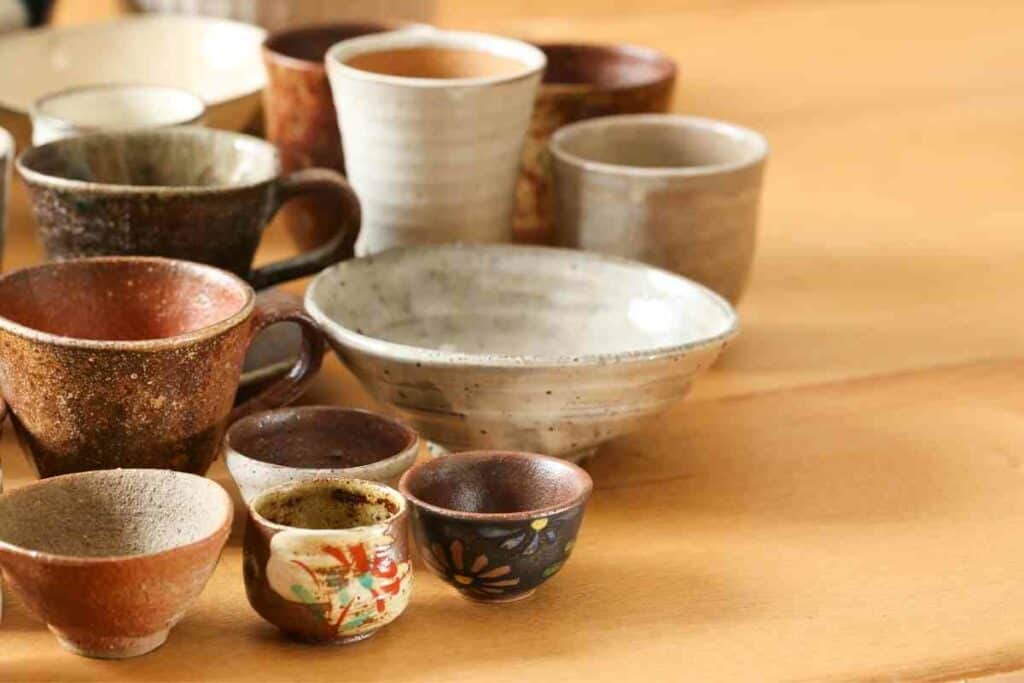
Amakusa ware is made with a type of porcelain clay. This style is known for its white pieces that are glazed with simple blue designs.
15. Hagi Ware
Hagi ware is known for being as simple as possible; never shaped perfectly or embellished.
When it is fired, deep cracks form in the clay, another of the distinctive features of Hagi ware from the Yamaguchi prefecture.
16. Hasami Ware
From the Nagasaki prefecture came the Hasami ware.
This area produced the most porcelain in Japan.
The almost translucent white porcelain that was created here was decorated with simple designs in blue enamel.
17. Iga Ware
Iga ware is the perfect example of wabi-sabi; the acceptance of imperfections.
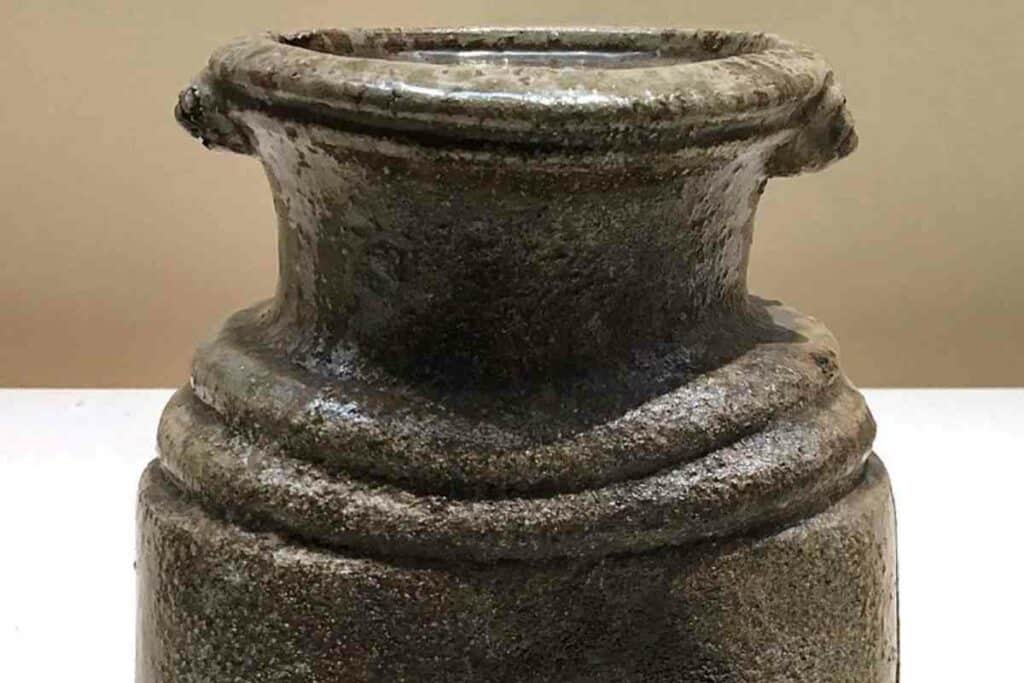
Each piece was decorated with wave-like patterns and was never symmetrical or perfect.
18. Iwami Ware
Iwami ware is a type of stoneware that was created in the Shimane prefecture.
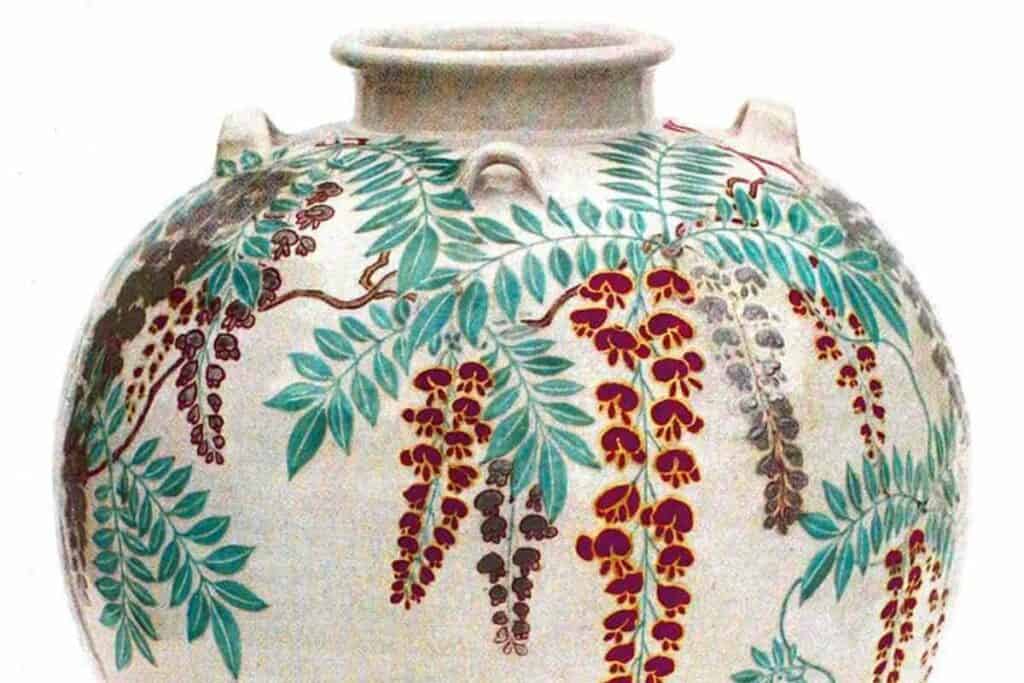
The clay from this area produced had a low water absorbency and was resilient to salt and acids.
This made for excellent water jugs, and they were made so large that you could hide inside one.
19. Izushi Ware
Izushi ware comes from the Hyogo prefecture and is one of the most ornate types of pottery in Japan.
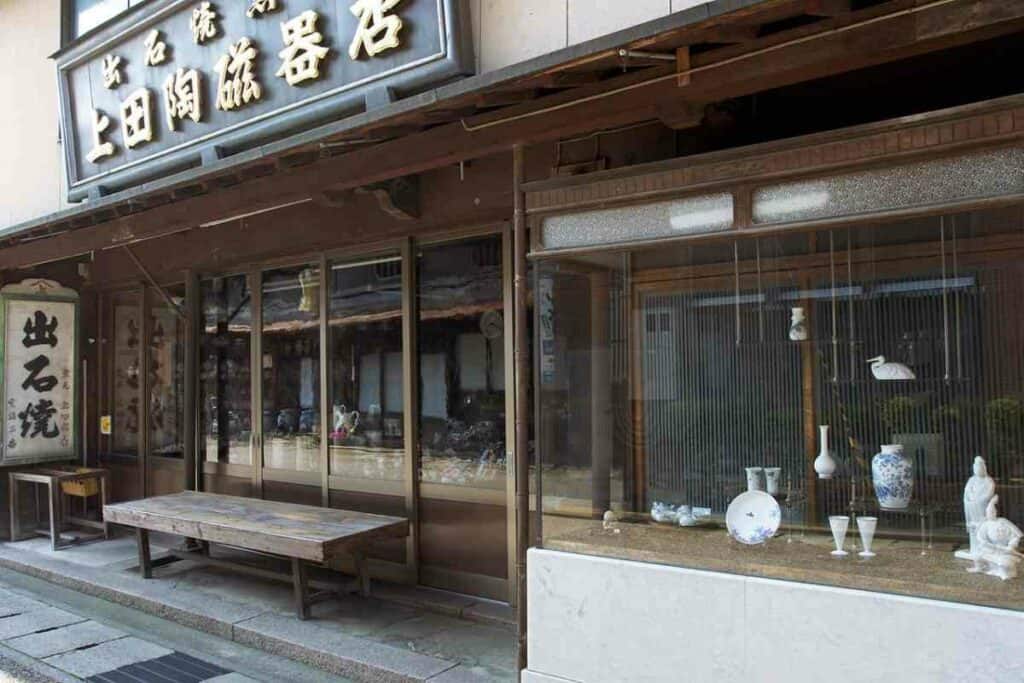
The actual piece is carved to show elaborate detail instead of being painted with enamels as a way of showing off the art.
Despite the artistry, these pieces were still strong enough to be considered something you could use daily.
20. Kasama Ware
Kasama ware is a traditional souvenir purchased after visiting the Inari shrine in the Ibaraki prefecture.
This style repels dirt and is great for plates or bowls or other daily use items, or decorative items like flower vases.
21. Koishiwara Ware
This pottery style from the Fukuoka prefecture is easily recognized by its repetitive patterns.
As the piece rotates when the potter makes the same mark over and over again until the piece has completed a circle.
These can be lines, waves, or dots, as long as they are a simple marks and not a design.
22. Kyoto-Kiyomizu Ware
The Kyoto-Kiyomizu pottery style began in Kyoto during the Heian period but gained popularity alongside tea ceremonies.
This style contains large amounts of glass pieces that add transparency to the finished piece, and are often decorated with blue, gold, and green enamel designs.
23. Mashiko Ware
Mashiko ware was created in the Tochigi prefecture in the 1800s.
This style is characterized by its simple, natural forms.
The clay used contains a high iron content which gives the pieces a reddish-brown color when fired.
These pieces were meant to be used daily and were therefore very sturdy and chip resistant.
24. Mikawachi Ware
Mikawachi ware is a type of porcelain that originated in the Nagasaki prefecture.
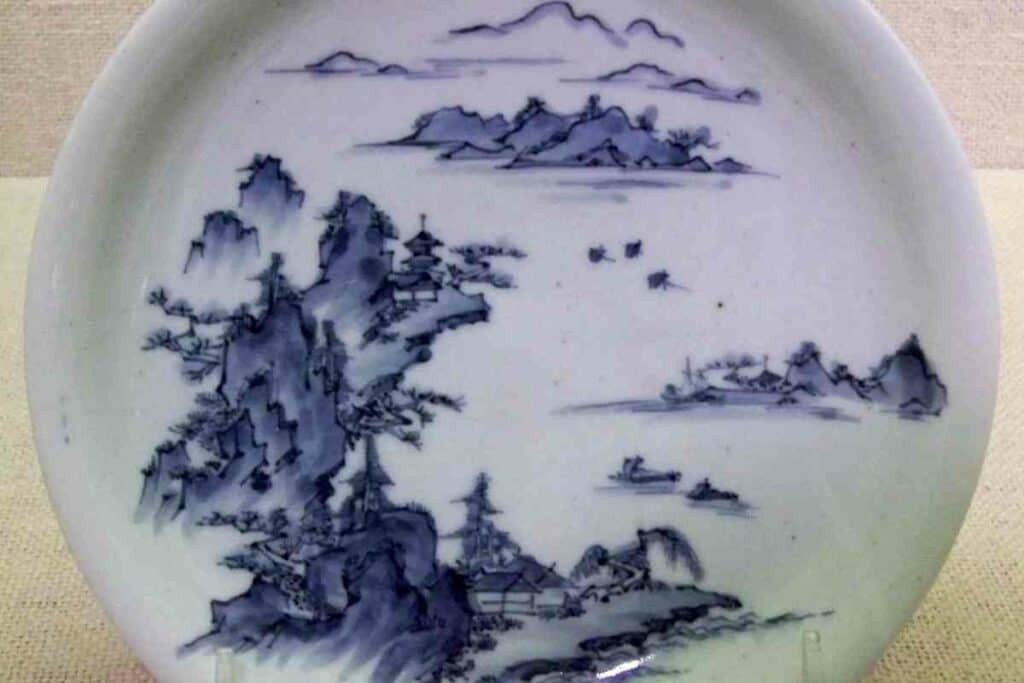
The white porcelain is covered with a blue glaze and is often decorated with geometric patterns.
25. Obori-Soma Ware
Obori-Soma ware is a type of stoneware that was created in the Fukushima prefecture.
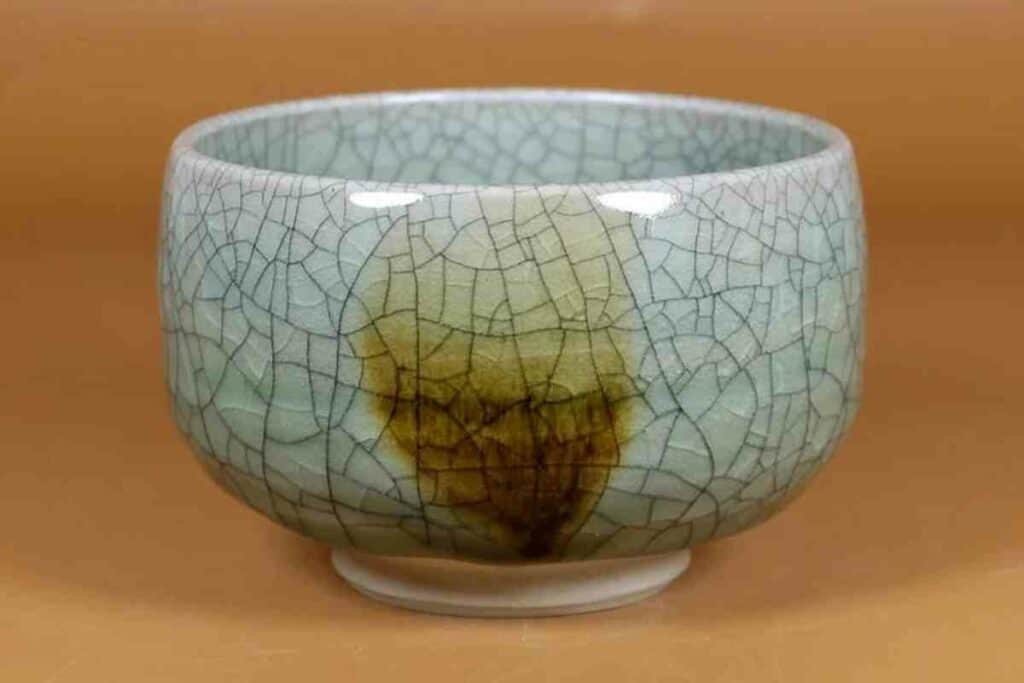
The clay used to make this pottery is gray and black and is made with a double-wall technique that makes it great for insulating hot liquids.
26. Otani Ware
Otani ware was created in the Shiga prefecture.
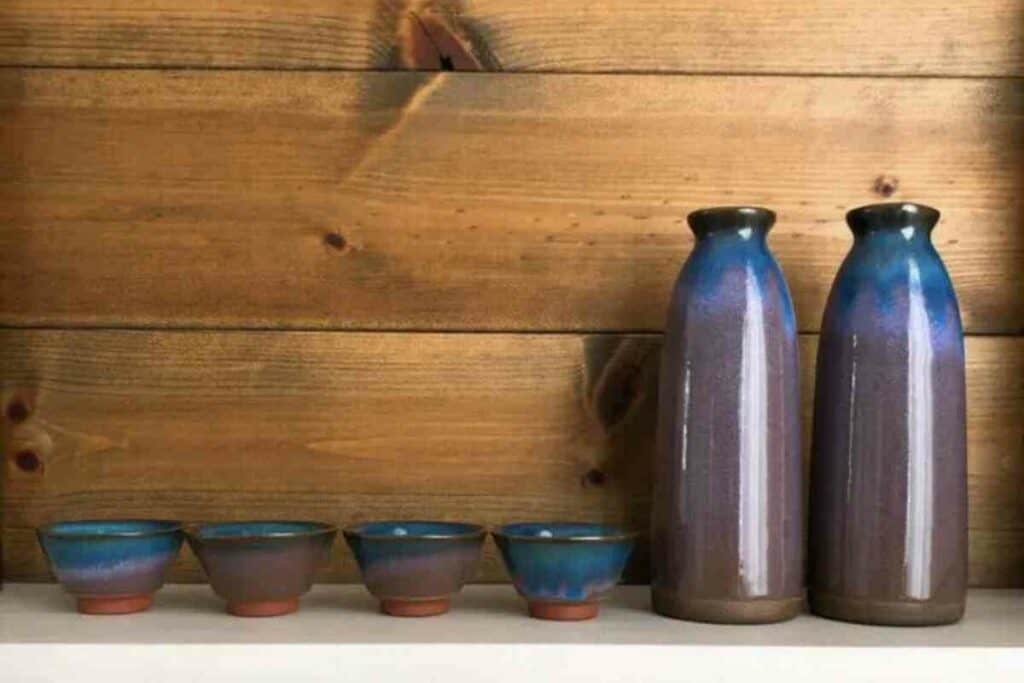
The clay used to make this pottery is white and contains mica, which gives it a pearly sheen.
This style is characterized by its intricate designs, often featuring nature scenes or landscapes.
27. Sanshu-Onigawara Ware
Sanshu-Onigawara ware was created in the Aichi prefecture.

The pieces created are different from anything that’s been mentioned so far, and they make roof ornaments.
Most of the ornaments are oni, or Japanese ogres, who keep houses safe from evil spirits.
28. Satsuma Ware
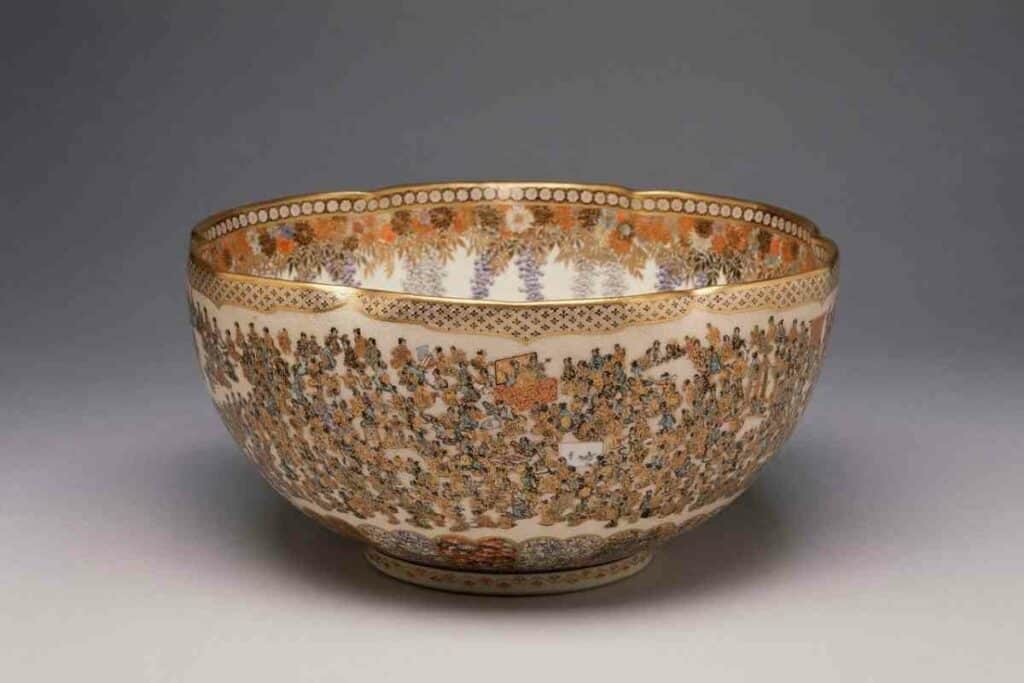
Satsuma ware uses an intricate technique of painting a piece to look as though an ornate fabric is draped on it.
This takes an incredibly steady hand and years of training to not only have the artistic ability to draw the design, but to imagine how a cloth would sit and where the pattern folds.
Final Thoughts
Japanese pottery is a beautiful art form that has been around for centuries.
Each type of pottery has its own unique qualities, and together they create a stunning display of Japanese craftsmanship.
Whether you’re looking for a daily-use item or a decorative piece to add to your collection, there’s sure to be something among these styles that catches your eye.
- The Forbidden Japanese Island That Will Give You Nightmares
- Miss Japan Forced to Wear Sailor Moon Costume Since Childhood: Claims It’s the Secret to Her Success
- Essential Guide to Japan VPN: Secure Access and Privacy for Travelers
- Sumo Wrestler Suit for Adults by TOLOCO: Best Sumo Suit?
- Eki Stamp Book (Gotta Collect Them All!)
- Explore the Fascinating World of Japanese Rubik’s Cubes









